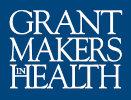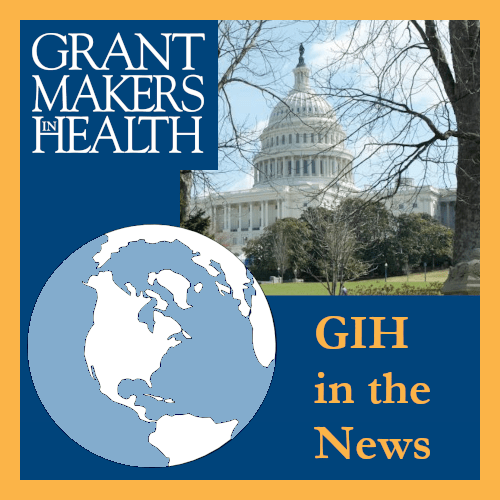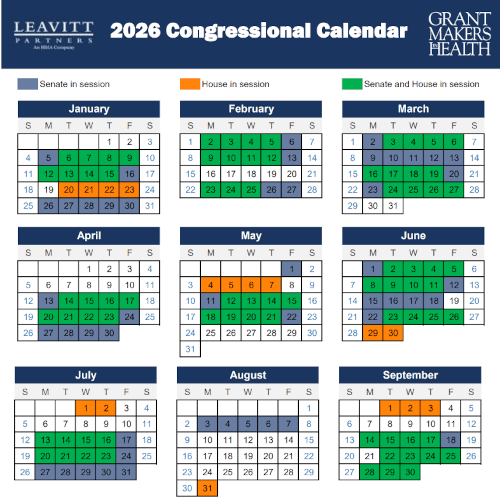GIH President and CEO Cara V. James Joined The Rural Impact Podcast for a Conversation about the Intersections of Policy and Philanthropy
On December 4, 2025, Cara V. James, President and CEO of Grantmakers In Health (GIH), was featured in an episode of The Rural Impact podcast. She joined Michelle Rathman, host of The Rural Impact and strategic communications advisor in health care policy, for a conversation on the intersections of policy and philanthropy, challenges with rural health funding, and more. “Policies that are impacting rural communities are…
2026 Congressional Calendar
Developed in collaboration with Leavitt Partners, this calendar tracks when each house of congress will be in session in 2026.
Grantmakers In Health’s Partnership with Sustainable Agriculture and Food Systems Funders Highlighted in Inside Philanthropy Article
Due to cuts to the Supplemental Nutrition Assistance Program (SNAP) in H.R.1, along with the program’s suspension during the longest government shutdown in American history, Grantmakers in Health (GIH) is partnering with Sustainable Agriculture and Food Systems Funders (SAFSF) on a funder working group to coordinate philanthropy’s response. This partnership, along with SAFSF’s broader work, was highlighted in a November 13, 2025 Inside Philanthropy article. In the piece, Clare Fox, SAFSF’s…
GIH Health Policy Update Newsletter
An Exclusive Resource for Funding Partners
The Health Policy Update is a newsletter produced in collaboration with Leavitt Partnersi and Trust for America’s Health. Drawing on GIH’s policy priorities outlined in our policy agenda and our strategic objective of increasing our policy and advocacy presence, the Health Policy Update provides GIH Funding Partners with a range of federal health policy news.
The Role of Philanthropy in Implementing Federal Health Reform
In March 2010 President Obama signed both the Patient Protection and Affordable Care Act and the Health Care and Education Reconciliation Act into law. These two laws will dramatically affect the health insurance system and the delivery of care in America.
Paving the Way for Change: Implementing CLASS
The historic passage of the 2010 Patient Protection and Affordable Care Act was in many ways a homerun for health advocates who have been working toward meaningful reform for decades. The new law lays the groundwork for sweeping changes in the American health care system, expanding access, coverage, and personal responsibility for care suited to individual needs.
Prison Diversion Programs: Compelling Social Investments for Foundations
As a relatively small, regional niche foundation, Staunton Farm Foundation reasoned that “improving behavioral health” was too broad an area for us to make a significant impact. Hence, the foundation chose to focus on criminal justice.
GIH Releases New Report on Funder and Advocate Response to Health Reform Implementation
Grantmakers In Health has released “Implementing Health Care Reform: Funders and Advocates Respond to the Challenge”, a report based on over 40 interviews with national and state grantmakers and advocacy organizations about their initial work around implementation.
Board Service: From in Perpetuity to Term Limits
Twenty-five years ago in 1985, The Health Foundation
of Greater Indianapolis was created with proceeds
from the sale of MetroHealth, one of the first
statewide, staff-model Health Maintenance Organizations
(HMOs). As an independent, not-for-profit grantmaker, the
foundation has been, and is still, dedicated to preserving and
enhancing the physical, mental, and social health of the
Greater Indianapolis community.


